We have all found online zoom debates very effective during lockdown, but as The Buyer’s latest debate proved there is nothing quite like bringing wine buyers together to share their views and wines. Thanks to our panel for taking part which included: Elliot Awin, partner, ABS Wine Agencies; Joshua Castle, head sommelier, Noble Rot; Ray O’Connor, wine director, Naked Wines; Victoria Sharples, wine consultant who is shortly opening her own wine bar in Hampstead Heath; Joelle Nebbe-Mornod, owner of Alpine Wines; and Rebecca Palmer, head of commercial wine buying at Corney & Barrow.
One of the key themes that has come out of the last 15 months of lockdowns and Covid-19 restrictions has been the wine trade and consumers collective desire to taste different wines, explore new regions and get out of their comfort zones in terms of the wines they are prepared to try.
The Buyer’s Beaujolais and Centre-Loire debate very much captured that spirit of adventure by switching the focus on what these two classic French regions are not famous for. Beaujolais whites and Centre-Loire reds.
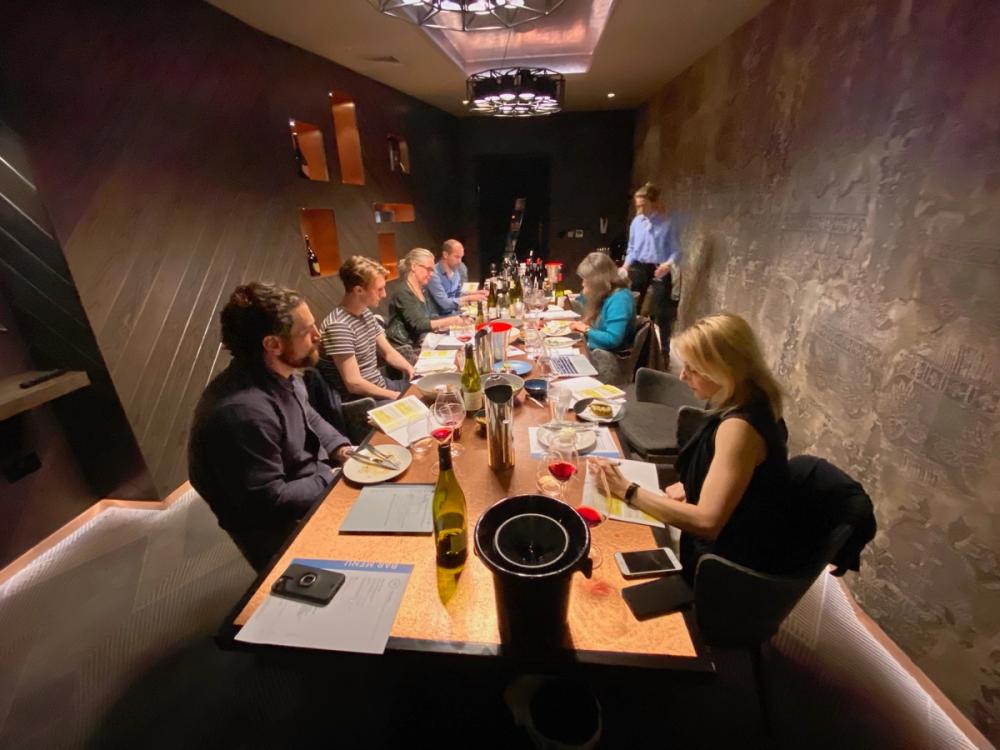
The Buyer’s debate brought leading wine importers and sommeliers together to analyse the potential for Beaujolais whites and Centre-Loire reds in the UK
Great credit has to to go the two co-organisers for the event – the two generic bodies for the regions – Inter Beaujolais and Centre-Loire Wines – for capturing the mood of the times and the ambition to come together and put the wines that usually play second fiddle in the market centre stage.
Although they were prevented from attending the actual debate itself – held at M Victoria in London – they were able to join in proceedings and introduce their respective regions via Zoom displayed on a TV screen.
Setting the scene
Here Inter Beaujolais’ export manager, Caroline Santoyo and the Centre-Loire Wines’ export assistant Camille Roblin were able to set the scene and put the red and white wines in context to the overall production and what is being sold and exported around the world.
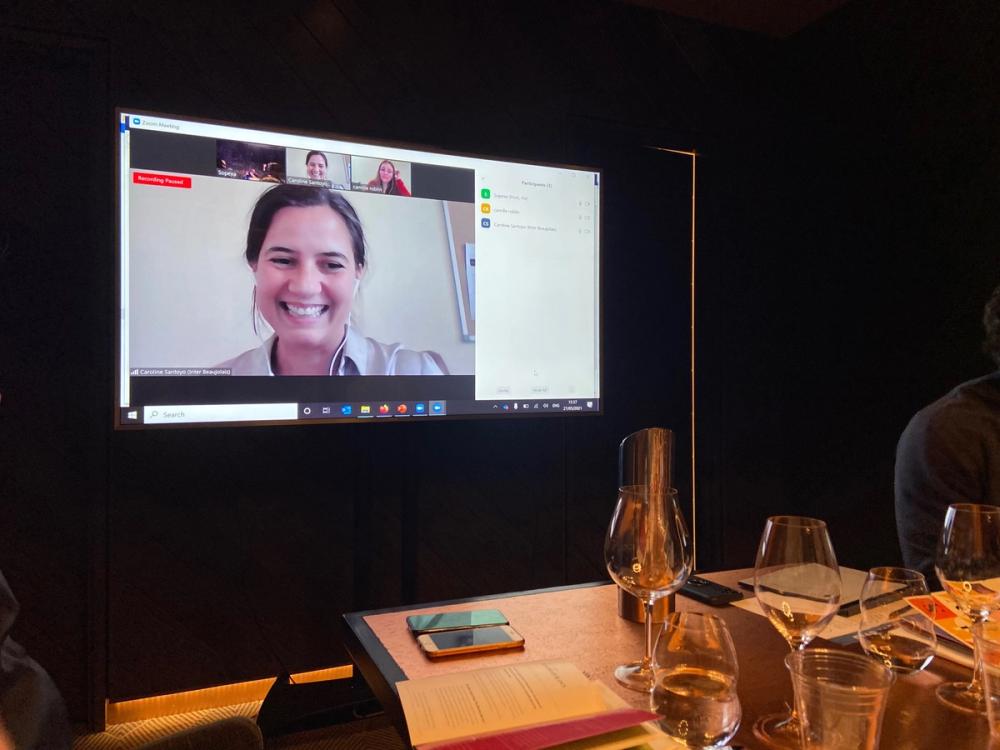
Inter Beaujolais’ export manager, Caroline Santoyo, was able to join the session via Zoom from France and explain the region’s export strategy to the buyers
When we talk about Beaujolais whites we are effectively talking about Chardonnay, said Santoyo, which flourishes on the limestone or marly land in the north of the region, just on the edge of Burgundy’s Mâconnais, and also in the south-west of the region.
But with only 3% of all the total vineyards planted with Chardonnay (around 400ha in 2020 of which 285ha is Beaujolais Blanc and 115ha is Beaujolais Blancs Beaujolais-Villages) it is easy to see why it slips below the radar compared to the region’s reds.
But whisper it gently the region’s white wines are growing in popularity amongst growers and consumers alike, with nearly 450 growers producing some 2.5m bottles of white wines a year in the area, and 3% of total production (18, 580 h/l) up from 1.8% in 2011 and 2.3% in 2016.
Santoyo said there is much more incentive in the region to have at least some white wines in your range in order to meet demands from buyers who are looking for something different. “It’s a nice way to diversify your range and open up new markets. It’s good to have a niche wine in your range as it opens up conversations,” she added.
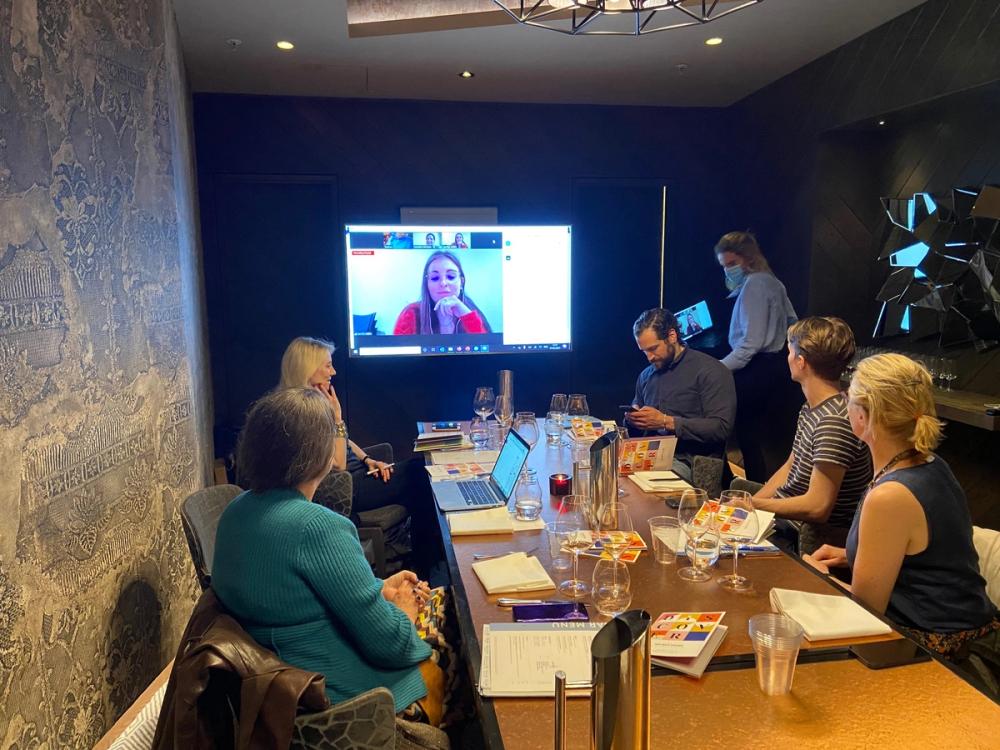
The Centre-Loire is focused on producing more precise red wines, said Camille Roblin
Camille Roblin was able to explain the Centre-Loire’s red wine strategy: “Today, the production of red wines is increasing in Centre-Loire because we have real convictions in the production of quality red wines that reflect the expertise and know-how of our winemakers even if the red wines are still confidential. Moreover, the current climate in our region is very favourable to the production of quality red wines and we are moving towards a new strategy in Centre-Loire, a strategy focused on the production of red wines from terroirs and ‘lieux-dits’ with more precise work in the vineyard, more precise vinification, longer maturation times, etc. Our terroirs are favourable to the production of fruity red wines and are pleasant to drink.”
Red wines make up much more of the overall production in the Centre-Loire, accounting for 12.5% of wines, across 670 growers, producing 4.8 million bottles a year. Of which 52% comes from Sancerre, 22% Menetou-Salon, 10% from Reuilly, 8% from Coteaux du Giennois, 6% from l’AOC Châteaumeillant and 2% Côtes de la Charité made up of predominantly Pinot Noir and Gamay varieties.
But, up to now, the majority of Centre-Loire reds have remained in France and that is what the region would like to change, step by step, added Roblin.
The buyers were pleased to hear a commitment from both regions to increase organic production with more vineyards becoming certified – Beaujolais production is up by about 30% each year since 2018. Its ambition, confirmed Santoyo, is for all wineries to hold an environmental certification or label. Currently 47% of vineyards are covered.
The Loire is following a similar strategy, said Roblin. “The demand is coming from growers and consumers,” she said.
The Buyers’ initial perceptions
Joshua Castle, head sommelier at Noble Rot, was quick to sing the praises of what he sees as being both “hot regions” for producing the kind of wines that sommeliers and consumers are looking for, with both classic styles, but increasingly biodynamic and lower intervention wines too.
Every year Noble Rot runs a special Beaujolais event to celebrate the region and to show “it is taking Beaujolais seriously – and whites are an extension of that”. He also sees Beaujolais whites playing a role as a good value alternative to premium Mâcon, and offering a good counter point to what are global “benchmark” Gamay wines that have a following all of their own.
Similarly the Loire as a region is picking up traction amongst sommeliers, claimed Castle. “There is an emergence of some fantastic producers making small scale wines which from a boutique perspective is what we are interested in.”
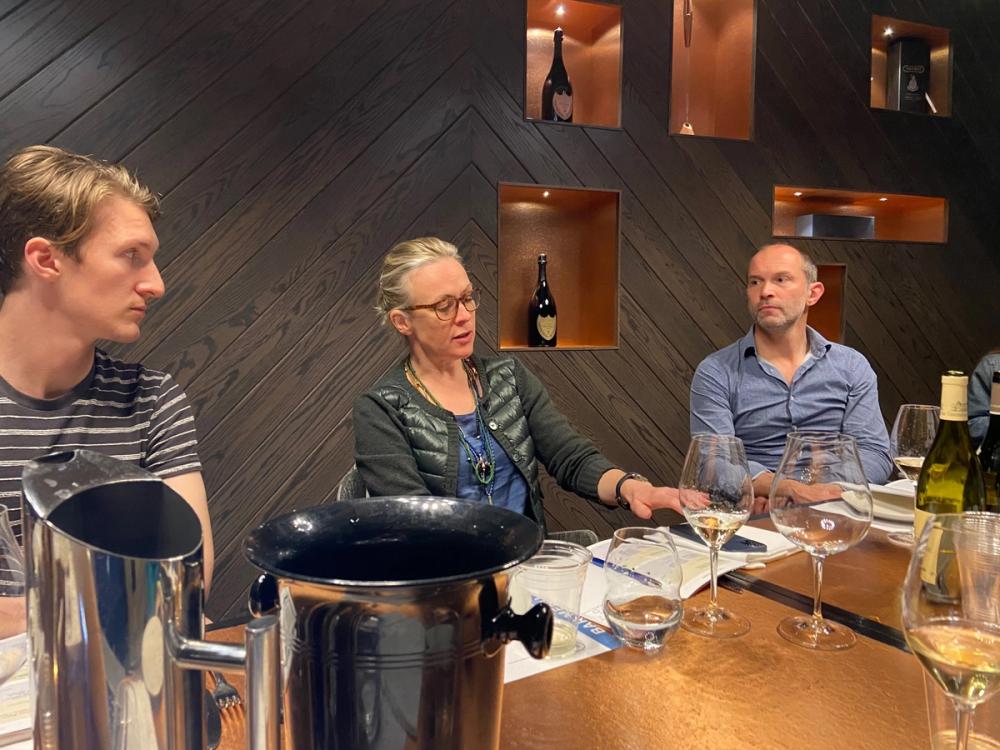
Victoria Sharples explains where she thinks there are opportunities for Beaujolais whites and Centre-Loire reds to Noble Rot’s Joshua Castle, left, and Ray O’Connor from Naked Wines, right
Victoria Sharples, who is currently sourcing wines for the new wine bar she is opening this summer in Hampstead Heath, has long been a fan of Centre-Loire reds, particularly during her time buying wine for St John Restaurants and its predominantly French wine list. “Centre-Loire reds would out sell Centre-Loire whites easily. St John has a huge selection of both,” she said. “They were such good value.”
Where Centre-Loire reds worked so well for a business like St John, she said, was that there were enough styles to suit very different customer bases in its two restaurants. She was, in her time there, also buying and sourcing wine to distribute into the trade as well. The region’s diversity also meant there was consistently something new and different for its customer to try, she said. It was also working with small independent growers who they personally knew and the Centre-Loire reds fitted so well with the overall story and approach of St John.
Word of mouth
It was the same word of mouth approach for Beaujolais whites, she added: “We started bringing in Chardonnay from Beaujolais as one of our producers was making it and it was bloody good. I was also looking for something that was a little bit different to Macon and gives you that extra bit to talk about. The flavours are actually really enjoyable with a little edge to them. They are interesting but also not so left field that consumers consider them to be in still in a safe place.”
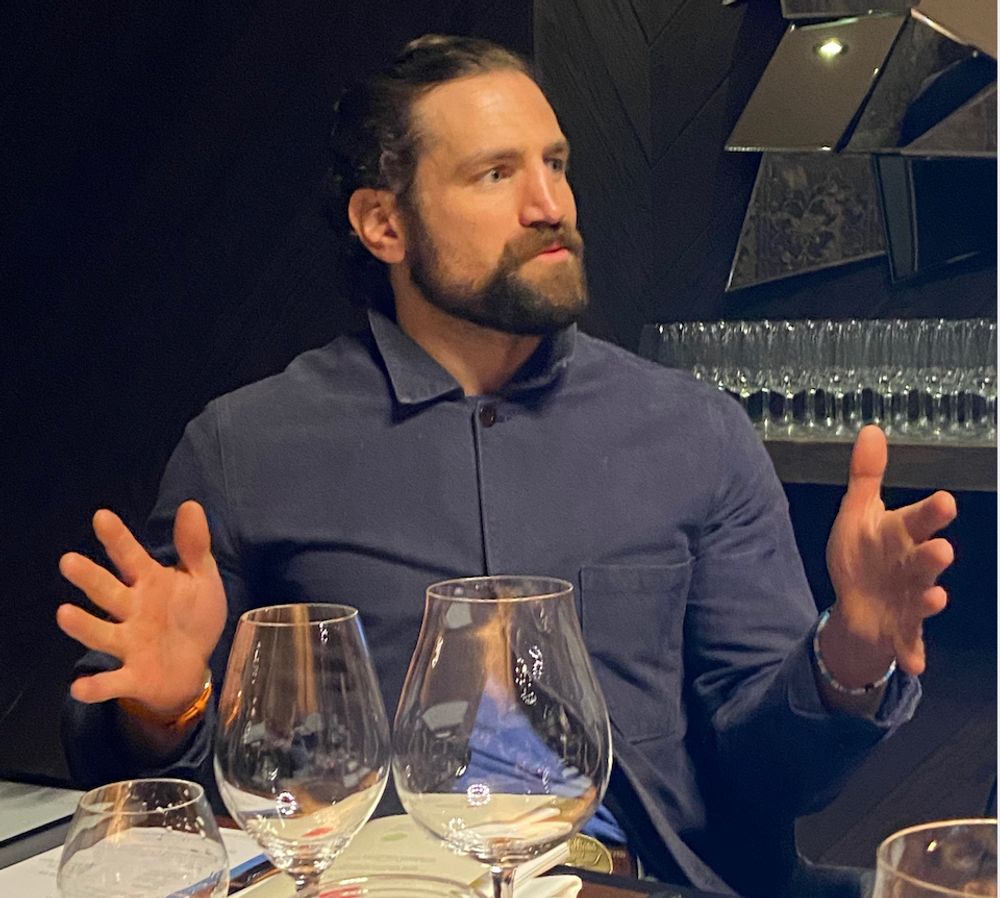
Elliot Awin likes the “slightly left field” appeal of Beaujolais white wines
Elliot Awin, partner at ABS Wine Agencies, says that whenever it holds any Beaujolais tastings with the two producers it works with, it will always get customers wanting to order wines from their whites selection “as they just stand out so well”. Beaujolais whites are a style of wine he likes to drink himself, as they often remind him of Burgundy Aligoté and agrees with Sharples that they have that “slightly left field” appeal.
Loire reds, however, have proved to be a harder sell when trying to get independent wine merchants on board, he added. They are perhaps better suited to more French specialists that have the sell through and ability to handle more niche wines on their lists.
Joelle Nebbe-Mornod, owner of Alpine Wines, which certainly fits the bill of being a French specialist, agreed that having a Centre-Loire red or Beaujolais white fits the bill for when a customer is looking around for something different that they have not seen or tried before.
“I will buy a little of each when I can, but I don’t see them very much,” she added. Which feels strange for her growing up in Switzerland where “Centre-Loire reds are a very normal” part of the wine market.
Rebecca Palmer, head of commercial wine buying at Corney & Barrow, said the reason why it is so interested in Beaujolais whites, in particular, is that they are not just different, but cheaper and becoming a real alternative to what are now often over priced and unaffordable areas of Burgundy, like the Côte d’Or.
Commercial value
They may not currently, in the main, be as structured, she said, but they offer that real commercial alternative when it is looking for good value, quality Chardonnay, with wine available for a few euros up to more premium price points. It potentially offers a new sourcing route for Chardonnay, but securing volumes has proved difficult, she adds.
“Beaujolais for us is about finding me too [wines} and convenience. You can ship smaller amounts, test wines to start with and then suddenly you have gone up to a pallet and you are building business and diversity for your producer as well. For them that’s great,” she explained.
The exciting aspect for Beaujolais whites, she adds, is that only 3% of its land is planted with white grape varieties and there is such huge potential for producers to better understand the soils and identify the best places to not only make better white wines, but that make them money too.
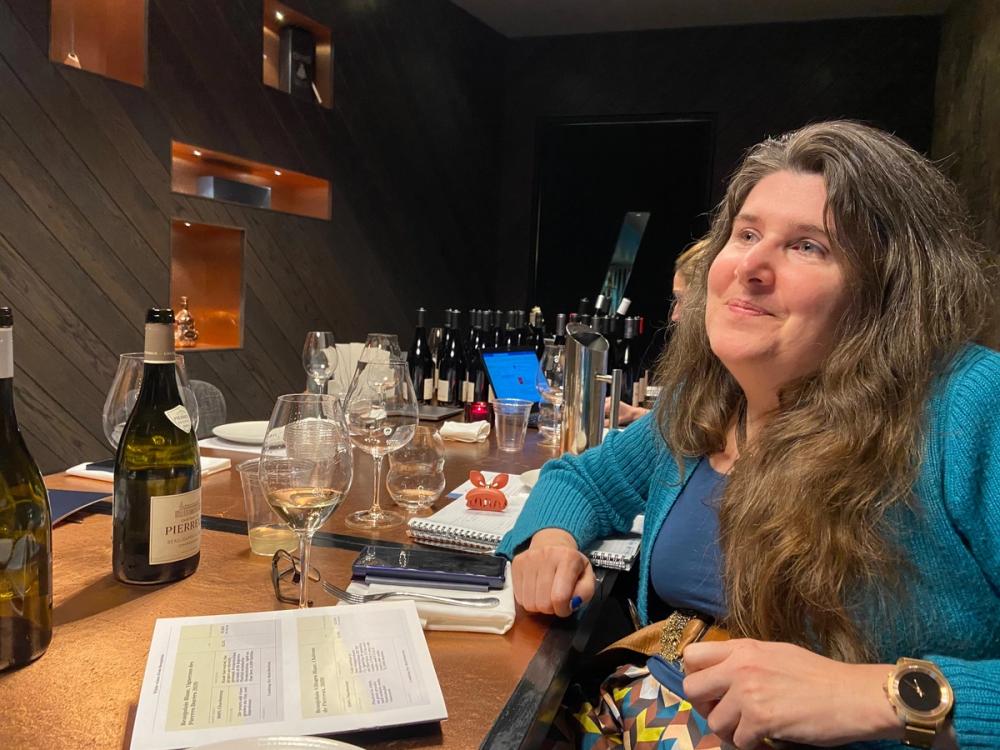
Alpine Wine’s Joelle Nebbe-Mornod said the key is to be super selective over what Beaujolais white wines you are buying
Nebbe-Mornod agreed and said those producers that are making white wines in Beaujolais have to be fully committed to what they are doing, as they are effectively turning down the opportunity to turn those wines into Crémant and potentially make money that way, so there is a commercial focus too.
That said most producers now have at least one white wine they are looking to sell. The challenge is picking the right ones to import and then finding enough volume of the best quality ones to sell. “I pick the ones with more minerality and style that is more unlike anywhere else. We have them more for the website and for the off-trade. We have never able to place them in the on-trade, but have also not pushed them much either as we can’t get enough in,” she said.
Ray O’Connor, wine director at Naked Wines, said it does not currently import any Beaujolais whites or Loire reds, but that is more through lack of “purpose” than not liking their wines.
The hand sell
The debate then centred around the styles of Beaujolais Chardonnay and Centre-Loire reds versus other countries and regions in the world.
The advantage Beaujolais has over say Australian Chardonnay, added Palmer, is that it was still coming from a classic French region and a viable alternative to Burgundy – even though the panel agreed Beaujolais whites were clearly not in the same styles as classic Burgundy Chardonnay.
That’s where Beaujolais whites and Centre-Loire reds have a real opportunity in independent wine merchants and restaurants like Noble Rot, says Awin, where there is the opportunity to hand sell and tell the story behind the wines.
Castle agreed: “I would not think twice about listing a Loire red. We know it would sell, from any part of the Centre-Loire. There are some serious wines there as well.”

Beaujolais and the Loire both provide excellent hand selling opportunities for buyers and sommeliers. Picture Pierre Mérat
Sharples sees Beaujolais whites being “quite a compelling option” for those customers who are looking to buy a Chardonnay and are willing and interested in discovering a wine that is away from the New World and Burgundy and further down the “Chardonnay platform”.
Which again puts the emphasis very much on the “gatekeeper” to invest in and have faith in Beaujolais whites and Centre-Loire reds to offer it as a genuine alternative, says Awin. “Who is selling it on the last run of the ladder?”
Palmer says there is still very much a communication challenge around Beaujolais whites – “it does not have Chardonnay written on the label” – and it is, in the main, still more expensive than say a Chardonnay from the Pays D’Oc, but she “has no doubt over time that it will come a category and there will be more pull through”. But that has to be balanced against how much wine is going to be sold locally in France and how much do they want to “diversity and have more strings to their bow”.
Awin felt that whatever category does emerge of Beaujolais whites it is going to be the wines that stand out from the norm, that offer something different that are going to have more chance of success than if you are just producing a standard style available from any producer.
Nebbe-Mornod says what you can rely on Beaujolais whites for is a good range wines available from around €5 to €8 trade price. “That’s where you have a lot of choice of mostly unoaked wines. If you want a bit of oak then they are nearer €10.”
New opportunities
Palmer also felt there was an opportunity in the Centre-Loire to go back to producing more Sancerre rosé styles and provide an alternative supply to Provence. It’s a switch she has seen more and more in the last five years to the point it is now hard to find producers willing to make a rosé, preferring to make a red wine instead. Which also reflects just how much more serious the region and its producers are taking the red opportunity – and the additional margins they can bring.
O’Connor agreed and said the experience of drinking a Sancerre rosé was so different to Provence rosé, with more mouth feel and less of the saccharine over tones. “There is great persistence in Sancerre rosé. It’s such a classy experience. So they could make Sancerre rosé big again and make it a bit of a spotlight.”
He says there is room for more grown up rosés and Sancerre certainly fits the bill. Arguably more so than Sancerre rouge on a wine list.
Tasting: Beaujolais Whites
Overall summary
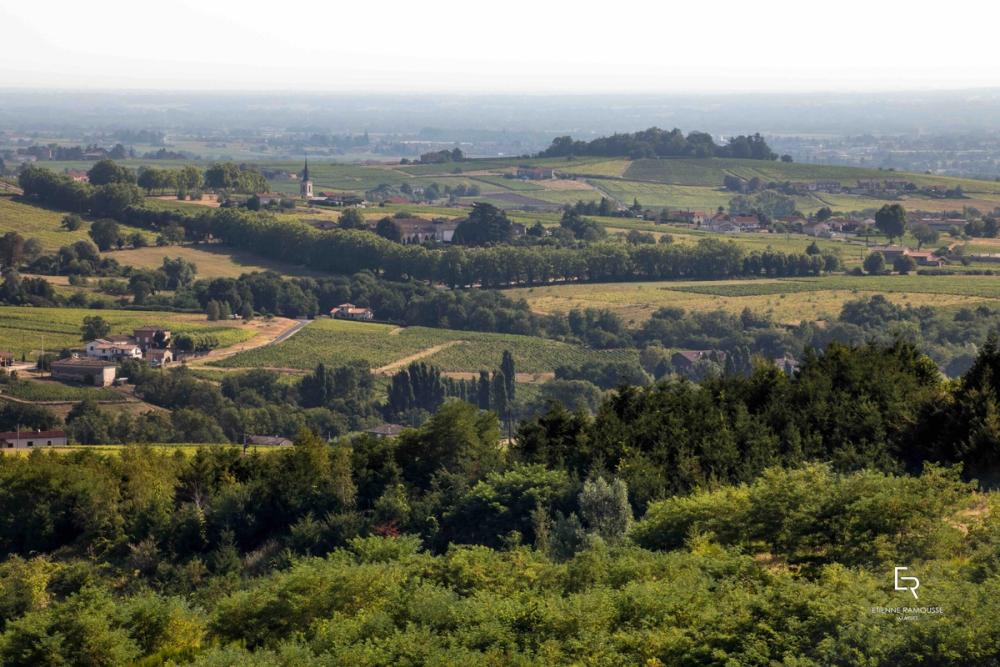
The panel were universally impressed by the range of Beaujolais whites they had the chance to taste
The panel was collectively impressed by the diversity and value of the six Beaujolais white wines tasted. Joshua Castle said he enjoyed how “stylistically” they were all different, yet they all stood out in their own way which has to be a positive for the region as a whole.
The wines that stood out the most were the ones that did have distinctive characteristics, and were bigger on the palate, which, by contrast, makes it hard to define or distinguish a specific category for Beaujolais whites, said Elliot Awin at ABS.
Joelle Nebbe-Mornod said Alpine Wines gets round that by selling them more as “winemaker wines” where each one reflects the personality of the person behind it. “I have not played on the Beaujolais blanc identity as no-one has a mental picture of what that is,” she added.
Which conversely goes against the conventional way that French wines are bought where the appellation is all important, said Awin. “Perhaps there needs to be more cohesion about the styles of wine being exported,” he added.
But then Victoria Sharples said that also reflects the versatility of the Chardonnay grape and the different ways it is used in the winemaking process. The one common characteristic she would pick out was “spice” and the use of lees. “But they are well made wines.”
Rebecca Palmer at Corney & Barrow agreed it was hard to “get to the knub of what the actual style is” and that the winemaking approach itself was all important. In the main she felt they needed a bit of “fairy dust” to be sprinkled to give them more “star quality” and take them to another level.
Ray O’Connor at Naked Wines agreed there were a lot of different styles at play, which also demonstrates “the chameleon” nature of Chardonnay. “These wines differ in their grape quality and freshness and their handling and taking care of bottling. But in general when they are good they are really good and they could sell very well.”
He advises the region to play on its proximity to Burgundy and that its wines are “affordable luxury” by comparison.
There were a few eyebrows raised around the alcohol levels, not in terms of being too extracted or unbalanced, but rather how they might respond to climate change.
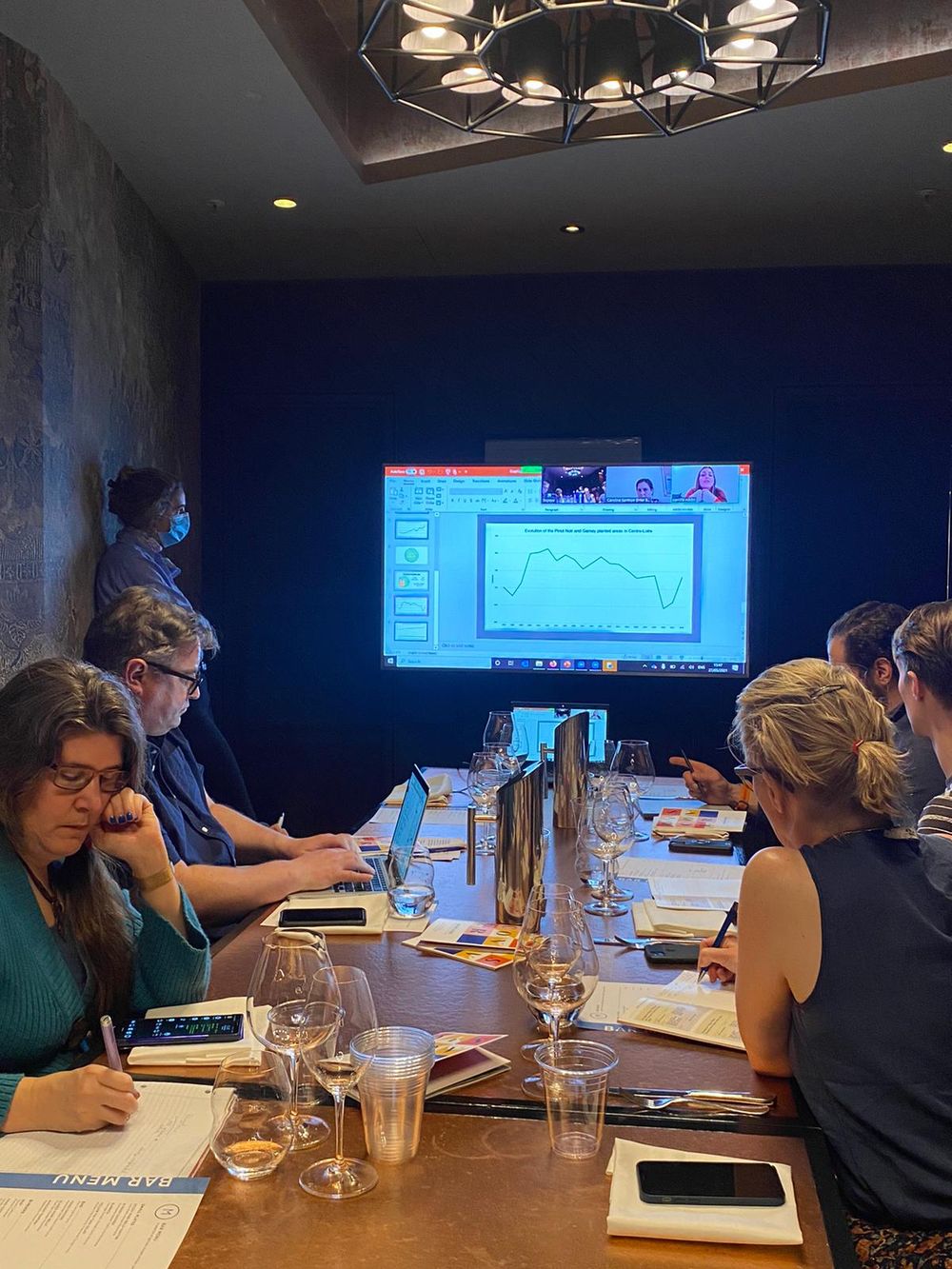
The panel had the opportunity to taste through a range of wines from both the Beaujolais and Centre-Loire
Beaujolais Blanc, Vignerons des Pierres Dorées 2020
13.5% abv, €12.94 ex cellar
30-years old vines grown on clay and limestone.
Looking for distribution
There was a big thumbs up for this wine from the panel who all felt it over delivered on what they were looking for from a Beaujolais white wine, particularly at the price point. The quality, though, more than stands up. “This is a well made wine,” said Sharples and “at the top of what you might expect from Beaujolais”. “This is my kind of wine,” added Awin. “It’s got a lot of fruit. This is what I want to drink.” “I have not tasted one as big as this, but it has got some length,” said Palmer. “It’s surprisingly good value.” Castle said he could really appreciate “the subtlety in the wine”.
It is very much in keeping with the styles of white wines you find in the north Beaujolais, said Nebbe-Mornod, with both strength and freshness. “It’s got a very seductive nose.”
Beaujolais-Villages Blanc, Château de Pierreux, 2020
13%, €12.95 ex cellar.
Planted in 2009, on pink granite and schists soils. Sustainable vineyard.
Looking for distribution
Again the panel found this an interesting wine, if not immediately as pleasing or as popular as the first. Sharples said it was the kind of wine that would be good to discuss with wine friends rather than necessarily buying for her own choice to drink. The 35,000 bottle production meant the panel felt it was not as distinctive as the first wine, but held its own and was proved a good contrast to show what is available.
Beaujolais Blanc, Château des Jacques, Clos de Loyse, 2019
12.5%, €11.50 ex cellar
9ha on ancient Piemonte deposits placed on a granitic bedrock. 40 year-old vines
Imported by Hatch Mansfield
The panel was more split on the third wine in the tasting between those who found it “silky” and “stylish” to those who thought it lacked a little of the character they were looking for and associate with the region. But they agreed it was certainly more at the commercially friendly style that the trade might be looking for with its 21,000 bottle production, which might have the US market in mind.
Beaujolais-Villages Blanc, Domaine des Nugues, Blanc, 2019
13%, €12 ex cellar
Chalky-clayey soils, with a density of 8,000 vines per hectare and 60 hectoliters/ ha of yield. HVE method.
Imported by Vinatis.
“The acids are really nice on this wine and it conveys a cooler climate ethos,” said Castle. Sharples picked up on the “nice spice” notes, whilst Palmer identified a “slight prickle” on the palate, but overall found it a “bit pithy”.

The buyers were excited about the potential for Beaujolais whites. Photo Pierre Mérat
Beaujolais Blanc, Domaine des Terres Dorées, Classic 2019
12.5%, €6.78 ex cellar
30 year-old vines cultivated on a limestone and clay soil and exposed to the west. Sustainable practices
Imported by Savage Selection, OW Loeb, Robert Rolls, Raeburn Fine Wines, R&H Fine Wines
Castle felt there was a seriousness and “oiliness” to this wine that had not come through on some of the others. O’Connor added: “It has linearity, minerality, it’s really fresh and open but not too much. It’s very nice. It’s a crackerjack.”
Palmer said there was a lot to enjoy and admire about the wine and wondered “how much is the terroir and how much is the winemaker?”
Beaujolais Blanc, Terres Dorées, Vinification bourguignonne en fût, 2019
12.5%, €9.84 ex cellar
40 year-old vines cultivated on a limestone and clay soil and exposed to the west. Sustainable practices
Imported by Savage Selection, OW Loeb, R&H Fine Wines
Again the panel felt this was a wine that offered both quality and value but had an extra element of intrigue. This comes from the age of the vines with all those 40 years helping the structure, the fruit balance and the acidity. A recurring theme for the panelists that this wine illustrated was how fresh the wines tasted and their potential with a wide range of dishes.
Beaujolais Blanc, Famille Chasselay, Eparcieux, 2017
12.5%, £12.40 for 2018 vintage. 2017 sold out
Grown on 0.8 hectares of clay and limestone soil with a density of planting of 8,5000 feet/ha. Yields are 20 hl/ha. The wine is made with temperatures kept at 17 degrees Celsius during the 15 days of fermentation with the use of indigenous yeasts.
This 100% Chardonnay was a good way to finish the selection of Beaujolais whites chosen to best demonstrate what the region can do. Its non sulphur, zero pesticide approach was certainly appreciated by the panel with Castle, in particular, enjoying the fresh, direct approach that shows the more adventurous winemaking styles that are helping give Beaujolais the variety and diversity in their white wines that buyers like him are looking for.
- In Part Two of our report we focus in on the buyers’ assessment of the Loire reds that they tasted and their thoughts on where they are best placed to be sold in the UK market.































